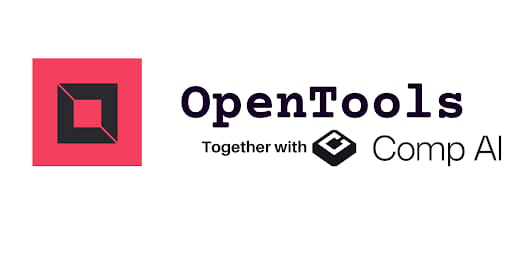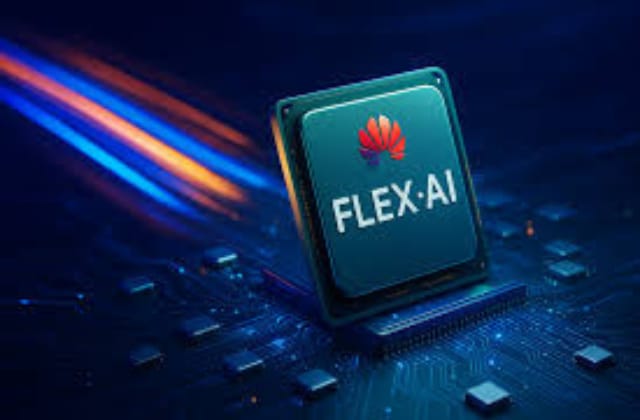- OpenTools' Newsletter
- Posts
- 🤯Huawei's 30% Efficiency Gain
🤯Huawei's 30% Efficiency Gain
PLUS: Google Needs 1000x Compute | Microsoft Faces AI Pushback
Reading time: 5 minutes
🗞️In this edition
Huawei's open-source software claims 30% GPU improvement
Sponsored: Comp AI - AI that handles compliance for you in hours
Google needs 1000x more AI compute in 5 years
Microsoft Copilot facing enterprise adoption crisis
Workflow Wednesday #46: AI & Personal Productivity
In other AI news –
Google denies gmail AI training claims
OpenAI to retire Gpt4o api in 2026
Nokia plans major AI push in the US
4 must-try AI tools
Hey there,
Huawei launched open-source orchestration software claiming 30% efficiency gains as China pivots to software optimization since they can't access cutting-edge chips.Google's infrastructure boss just told employees they need to double AI capacity every six months while admitting compute constraints are killing product launches.And Microsoft's facing enterprise pushback on Copilot with customers saying "I want 300 licenses to go to zero" as a 16,000-employee company ditched them for Google Gemini.
We're committed to keeping this the sharpest AI newsletter in your inbox. No fluff, no hype. Just the moves that'll matter when you look back six months from now.
Let's get into it.
What's happening:
Huawei Technologies on Friday introduced open-source software claiming it can significantly improve utilization rate of AI chips, marking the latest effort by Chinese companies to achieve world-class AI training capabilities without access to the latest Nvidia processors.
Flex:ai, which pools and orchestrates processors to squeeze out more performance, came as part of Huawei's effort to develop a self-sufficient compute ecosystem by overcoming China's shortcomings in individual chipsets.
Built on open-sourced platform Kubernetes, the software is an orchestration system for GPUs, NPUs, and other accelerators from different chipmakers. It could slice a single card into multiple virtualized computing units, allowing several AI workloads to run in parallel.
The tool could enhance processor utilization rate by 30% on average, the company said. A smart scheduler called Hi Scheduler handles GPU and NPU allocation across clusters. The system can also pool idle processors from different nodes and redistribute their power to AI tasks.
Flex:ai will be open-sourced through Huawei's ModelEngine developer community. Researchers from Shanghai Jiao Tong University, Xian Jiaotong University, and Xiamen University collaborated on the project.
Huawei's new release resembles offerings from Run:AI, a Tel Aviv startup acquired by Nvidia for $700M in 2024, known for orchestrating AI workloads across large GPU clusters.
Why this is important:
30% utilization improvement from software orchestration is significant if claims hold. Most GPU clusters run at 40-60% utilization. Getting to 70-90% stretches existing hardware further.
Chinese companies turning to software optimization to offset limited chip access is a strategic response to US export controls. Can't get better chips, so optimize what you have.
Huawei open-sourcing Flex:ai through ModelEngine creates ecosystem play. Other Chinese companies adopt it, Huawei becomes infrastructure standard despite hardware limitations.
Resemblance to Run:AI, which Nvidia acquired for $700M, validates approach. Nvidia saw value in orchestration software. Huawei's building equivalent.
Our personal take on it at OpenTools:
Software optimization is China's answer to chip export controls.
US blocks advanced chips. China responds by squeezing more performance from available hardware through better orchestration, caching, and virtualization. That's a smart strategy when you can't compete on raw silicon.
30% utilization improvement is meaningful if accurate. But "on average" is doing work in that claim. Average across what workloads? What baseline? Independent verification needed.
The Run:AI comparison is telling. Nvidia acquired Run:AI for $700M because orchestration matters as GPU clusters scale. Huawei's building equivalent without spending $700M by developing internally.
But software optimization has limits. Eventually you need more compute, not just better scheduling. China's buying time with efficiency gains while building domestic chip capabilities.
This is infrastructure competition shifting from hardware to software. China lost hardware access. Now competing on orchestration, optimization, and ecosystem. Clever pivot.
From Our Partner:
Comp AI is extending its Black Friday offer - but only for a few more spots.
SOC 2 or ISO 27001
Pen test + audit included (normally ~$10k).
Get started for just $99.
Same platform, same speed, same support. Just a crazy good entry point before year-end compliance planning hits.
What's happening:
Google's AI infrastructure boss told employees the company must double its serving capacity every six months to meet AI demand. That means delivering 1000x more capability in 4-5 years.
Amin Vahdat, VP at Google Cloud, presented the slide titled "AI compute demand" at a November 6 all-hands meeting attended by CEO Sundar Pichai and CFO Anat Ashkenazi. "The competition in AI infrastructure is the most critical and also the most expensive part of the AI race," Vahdat said.
The presentation came a week after Alphabet raised its capex forecast to $91-93 billion for this year, with a "significant increase" in 2026. Microsoft, Amazon, Meta, and Google now collectively expect to spend over $380 billion in 2024.
Pichai acknowledged compute constraints are limiting product launches. "When Veo launched, how exciting it was. If we could've given it to more people in the Gemini app, I think we would have gotten more users but we just couldn't because we are at a compute constraint."
On AI bubble concerns, Pichai said "the risk of underinvesting is pretty high" and pointed to Google's cloud business hitting $15 billion with 34% growth. "I actually think for how extraordinary the cloud numbers were, those numbers would have been much better if we had more compute."
Why this is important:
Doubling capacity every six months is exponential scaling that's unsustainable long-term. Moore's Law was doubling every 18-24 months. Google's attempting 3-4x faster pace.
1000x more capability in 4-5 years at "essentially the same cost and same power" is an admission that current infrastructure economics don't work at scale. Without efficiency breakthroughs, costs spiral.
Compute constraints blocking product launches like Veo means Google can't capitalize on AI innovations they've already built. That's revenue left on the table because infrastructure can't keep up.
$380 billion collective spend by four hyperscalers in one year is unprecedented capital deployment. For context, that's more than most countries' annual GDP.
Our personal take on it at OpenTools:
This is Google admitting they're losing the infrastructure race.
Doubling every six months for 4-5 years is physically and economically impossible without breakthroughs. Data center construction, power availability, chip manufacturing all have lead times measured in years, not months.
The Veo example is critical. Google built an exciting video generation tool, limited launch because they couldn't serve demand. That's innovation bottlenecked by infrastructure. OpenAI and others face the same problem but Google's publicly acknowledging it.
$91-93B capex this year with "significant increase" in 2026 means Google's spending over $100B next year on infrastructure. That's more than most tech companies' entire market cap.
This is a prisoner's dilemma. Everyone knows spending might be irrational, but nobody can afford to be the one who underinvests if the others don't.
What's happening:
Microsoft's selling Copilot to enterprises but IT buyers are pushing back. "I know a lot of customers who are like, 'Yeah, I want 300 to go to zero,'" said Adam Mansfield of consulting firm UpperEdge, referring to Copilot licenses. "I don't even want it."
Microsoft CEO Satya Nadella claimed over 150 million people use Copilot and "more than 90% of the Fortune 500 now use Microsoft 365 Copilot," but didn't provide average users per company. The $30 per person per month pricing is the sticking point.
"Am I getting $30 of value per user per month out of it?" said Tim Crawford, who advises CIOs. "The short answer is no, and that's what's been holding further adoption back."
Microsoft's offering 50% discounts to some clients but "they're starting to lean away from the Copilot discounts," said Julian Hamood of Microsoft partner TrustedTech. The company announced a new Business tier at $21 per person per month for organizations under 300 users.
Competition's intensifying. "We just had a massive 16,000-employee company move all their mail back to Google so they can leverage more Gemini," Hamood said.
Microsoft's adding Anthropic's Claude models to Azure Foundry after Anthropic committed $30 billion on Azure. Internal adoption at Microsoft hit 70% daily usage among sales workers, up from 20% a year ago.
Why this is important:
Customers saying "I want 300 licenses to go to zero" and "I don't even want it" is devastating feedback for a product pitched as a productivity revolution.
The ROI problem is real. $30 per user per month across thousands of employees is millions annually. If value doesn't justify cost, companies cut licenses regardless of Microsoft relationship.
Microsoft offering 50% discounts then pulling back creates pricing uncertainty. Early adopters got half off, but new customers pay full price. That's bad optics.
16,000-employee company switching from Microsoft to Google specifically to use Gemini is concrete evidence Google's winning enterprise deals on AI capability.
Our personal take on it at OpenTools:
This is Microsoft's AI monetization crisis.
Nadella claiming 150 million users and 90% of Fortune 500 without providing average seats per company is statistical sleight of hand. If Fortune 500 companies buy 100 seats each to test, that's 50,000 users total from top enterprises. Not meaningful adoption.
The "$30 of value per user per month" question is existential. Most knowledge workers don't generate $30/month in time savings from Copilot. That math doesn't work unless productivity gains are massive and measurable.
The 16,000-employee company moving to Google for Gemini is brutal. That's an enterprise choosing a competitor specifically for AI capability. Microsoft losing deals to Google on AI is role reversal.
Microsoft adding Claude models to Azure Foundry is admitting their own models aren't competitive enough. If Copilot was clearly best, they wouldn't need Anthropic. Multi-model strategy is hedging.
Dropping the price to $21/month for small businesses is a desperation move disguised as expansion. If $30 wasn't working, lowering to $21 doesn't solve the value problem, just reduces revenue per user.
This is a classic enterprise software problem: great demo, unclear ROI, hard to justify at scale. Microsoft's trying to sell AI like they sold Office. But AI costs $360/year per user on top of Office. That's a different value proposition requiring different proof points they haven't delivered yet.
This Week in Workflow Wednesday #46: AI & Personal Productivity
This week, we’re showing you how to create pro-level content without losing a single minute to editing timelines or creative burnout.
Workflow #1: Produce a High-Converting Sales Video Without Touching a Timeline (Pictory.ai)
Step 1: Start with your script — or let AI write it for you. Keep it tight, under 90 seconds, and punchy.
Step 2: Drop it into Pictory’s Script-to-Video tool and let the …..We break down this workflow (and two more ways to optimize your daily routine with AI) in this week’s Workflow Wednesday.
Google denies ‘misleading’ reports of Gmail using your emails to train AI – Viral posts claim you need to opt out of Gmail’s ‘smart features’ to avoid having your emails used to train AI, but Google says it doesn’t use the content of your emails for AI training.
OpenAI is ending API access to fan-favorite GPT-4o model in February 2026 – Access to the model is scheduled to end on February 16, 2026, creating a roughly three-month transition period for remaining applications still built on GPT-4o.
Nokia plans $4 billion AI investment in the United States –The telecom equipment maker said that $3.5 billion of the investment will be allocated to R&D efforts. It added $500 million will be spent on manufacturing and capital expenditures in states including Texas, New Jersey, and Pennsylvania.
Rizemail - An AI-powered email summarization tool that helps users get to the core of their unread newsletters and long email threads
Kastro Chat - An AI-powered chatbot platform that allows businesses to create their own chatbots without any coding knowledge
Verbalate - A video translation and lip sync software designed to help businesses reach a global audience
Taranify - A platform that uses AI technology to provide mood-based recommendations for music, Netflix shows, and books
We're here to help you navigate AI without the hype.
What are we missing? What do you want to see more (or less) of? Hit reply and let us know. We read every message and respond to all of them.
– The OpenTools Team
How did we like this version? |
Interested in featuring your services with us? Email us at [email protected] |




